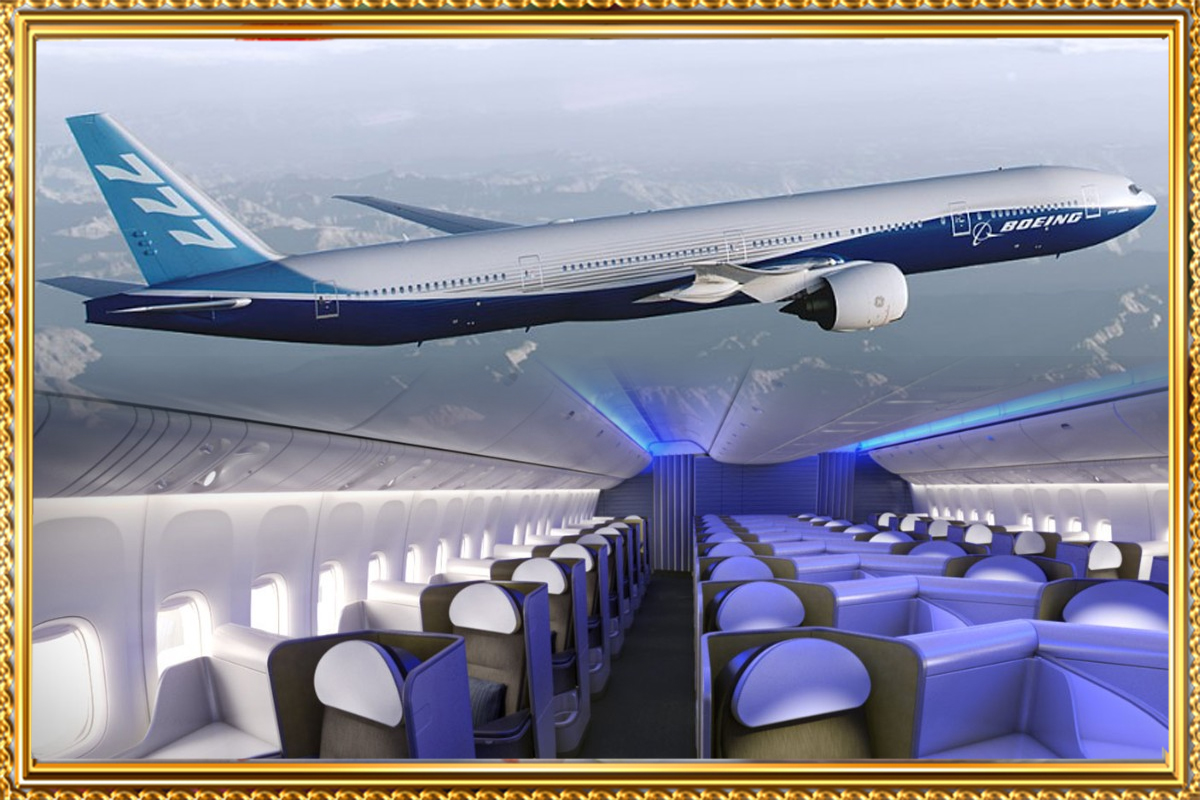- Home
- How the Boeing 777 Became an Aviation Icon
How the Boeing 777 Became an Aviation Icon

Discover what makes the Boeing 777 so special, why it’s a favorite among pilots and passengers, and how it compares to other aircraft like the Airbus A330. Learn about its design, features, and impact on the aviation industry.
The Boeing 777, also known as the "Triple Seven," stands as one of the most iconic and successful aircraft in aviation history. Let’s delve into why this aircraft has achieved legendary status and continues to be a favorite among airlines, pilots, and passengers alike.
What Makes the Boeing 777 Special?
Why Is the Boeing 777 So Famous?
Comparison: Boeing 777 vs. Airbus A330
Why Is the Boeing 777 So Successful?
Do Pilots Like the Boeing 777?
The Boeing 777X Series
Technological Innovations
Additional Points
Positive Aspects of the Boeing 777
Negative Aspects of the Boeing 777
FAQs About the Boeing 777
CONCLUSION
What Makes the Boeing 777 Special?
The Boeing 777 is renowned for its:
- Widebody Design: The 777 is a twin-engine, widebody jet with a spacious cabin that can accommodate up to 396 passengers in a typical configuration.
- Fuel Efficiency: Equipped with powerful GE90 engines, the 777 offers impressive fuel efficiency, making it a cost-effective choice for airlines.
- Range: The aircraft’s long range allows it to operate on ultra-long-haul routes, such as New York to Hong Kong, without the need for refueling.
- Advanced Technology: The 777 introduced groundbreaking avionics, including fly-by-wire systems and an advanced glass cockpit.
- Passenger Comfort: With larger windows, wider seats, and a quieter cabin, the 777 is designed for a superior passenger experience.

Why Is the Boeing 777 So Famous?
The Boeing 777 gained fame for several reasons:
- Record-Breaking Sales: It is one of the best-selling widebody aircraft, with over 1,600 units delivered.
- Global Reach: The 777 operates in nearly every corner of the globe, serving as a backbone for many airline fleets.
- Reliability: Known for its robust performance, the 777 has a stellar safety record.
Comparison: Boeing 777 vs. Airbus A330
While both the Boeing 777 and Airbus A330 are excellent aircraft, the 777 often edges out due to:
- Capacity: The 777 typically carries more passengers.
- Range: The 777’s range exceeds that of the A330, making it better suited for ultra-long-haul flights.
- Performance: The 777’s engines are more powerful, allowing it to operate in diverse conditions. However, the A330 is more cost-effective for medium-haul routes and has a slightly lower operational cost, making it a better choice for some airlines.
Why Is the Boeing 777 So Successful?
- Versatility: The 777’s multiple variants, including the 777-200ER, 777-300, and 777X, cater to diverse airline needs.
- Partnerships with Airlines: Boeing collaborated closely with airlines like United Airlines and Cathay Pacific during the design phase to ensure the aircraft met operational requirements.
- Economic Viability: The aircraft’s efficiency translates to lower costs per seat mile, boosting profitability for airlines.
Do Pilots Like the Boeing 777?
Yes, pilots love the 777 for its:
- Ease of Handling: The fly-by-wire technology and advanced cockpit make it a joy to fly.
- Comfort: Spacious crew rest areas and ergonomic cockpit design enhance long-haul operations.
- Reliability: Pilots trust the 777 for its consistent performance and safety features.
The Boeing 777X Series
- Improved Efficiency: The 777X features new composite wings, advanced GE9X engines, and improved aerodynamics, offering 10-15% better fuel efficiency than previous 777 models.
- Enhanced Passenger Experience: The 777X boasts larger windows, a wider cabin, and improved humidity levels, making long-haul flights more comfortable.
- Foldable Wingtips: A unique feature that allows the 777X to operate at airports with limited gate space.
Technological Innovations
- Redundancy Systems: The 777 incorporates multiple redundant systems, enhancing its safety and reliability.
- Integrated Monitoring: Advanced diagnostic systems monitor the aircraft's health in real time, reducing maintenance costs and downtime.
- Digital Design: The 777 was Boeing's first commercial aircraft to be fully designed using computer-aided design (CAD), streamlining the production process.
Additional Points
- Environmental Considerations: • Noise Reduction: Equipped with quieter engines and noise-dampening technology, the 777 meets stringent international noise regulations. • Sustainability Goals: The 777X is part of Boeing’s strategy to reduce carbon emissions, aligning with global sustainability goals.
- Market Dominance and Impact: • Market Share: The 777 holds a dominant position in the widebody aircraft market, with major operators worldwide relying on it for their long-haul operations. • Economic Contribution: The aircraft has significantly contributed to Boeing’s financial success and created thousands of jobs across its supply chain.
Positive Aspects of the Boeing 777
- Efficient Operations: Lower fuel consumption and maintenance costs.
- Passenger Satisfaction: Comfortable cabins with advanced amenities.
- Durability: Designed for high utilization and long service life.
- Environmental Impact: Lower emissions per passenger mile compared to older aircraft.
Negative Aspects of the Boeing 777
- High Initial Cost: The aircraft’s price tag is steep, which can be a barrier for smaller airlines.
- Dependency on Long-Haul Markets: Its success hinges on the demand for international travel.
- Engine Exclusivity: The GE90 engines are powerful but expensive to maintain.
FAQs About the Boeing 777
- Why do Boeing aircraft names start with 7? Boeing uses the number 7 as part of its branding strategy, starting with the 707 in the 1950s. The symmetry of "7X7" became iconic.
- Is the Boeing 747 bigger than the 777? Yes, the 747 is larger in terms of overall dimensions and passenger capacity, but the 777 is more efficient and versatile for long-haul routes.
- What is the difference between the 777-300 and 777-300ER? The 777-300ER (Extended Range) has higher fuel capacity and stronger landing gear, enabling it to fly longer distances than the standard 777-300.
- Who owns a Boeing 777? Many major airlines, including Emirates, Singapore Airlines, and American Airlines, operate large fleets of the 777.
- Why doesn’t the Boeing 777 have a hump? Unlike the 747, the 777 was designed as a twin-engine aircraft without the need for a second deck, allowing for a sleeker, more aerodynamic design.
Design Choice: No Winglets: Unlike other aircraft, the Boeing 777 doesn’t feature traditional winglets. Instead, it uses raked wingtips, which reduce drag and improve aerodynamic efficiency. This design minimizes weight and maintenance costs, while achieving the same benefits as winglets.

Conclusion: The Boeing 777’s legacy in aviation is unparalleled. Its blend of efficiency, comfort, and reliability has made it a favorite among airlines and passengers. While it faces competition from aircraft like the Airbus A330 and Boeing 787, the 777 continues to dominate the skies with its exceptional performance. Whether you’re a pilot, passenger, or aviation enthusiast, the 777’s impact on the industry is undeniable, cementing its place as one of the best airliners of all time.
0 Comments
Top Rated Adventure
Where to Find the Best Holiday Decorations and Free Tours in Washington D.C.
- 25 Nov 2024
- 0 0


















Post a comment